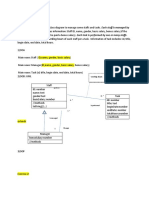0% found this document useful (0 votes)
29 views17 pagesNodejs Lab Observation
The document outlines a series of JavaScript and Node.js experiments, ranging from basic concepts like variables and functions to more advanced topics such as Promises, Express.js, and REST APIs. Each experiment includes code snippets and instructions for execution, covering essential programming techniques and web development practices. The content is structured in a sequential manner, making it suitable for learners to progressively build their skills in JavaScript and Node.js.
Uploaded by
vishistanallanchakravarthulaCopyright
© © All Rights Reserved
We take content rights seriously. If you suspect this is your content, claim it here.
Available Formats
Download as PDF, TXT or read online on Scribd
0% found this document useful (0 votes)
29 views17 pagesNodejs Lab Observation
The document outlines a series of JavaScript and Node.js experiments, ranging from basic concepts like variables and functions to more advanced topics such as Promises, Express.js, and REST APIs. Each experiment includes code snippets and instructions for execution, covering essential programming techniques and web development practices. The content is structured in a sequential manner, making it suitable for learners to progressively build their skills in JavaScript and Node.js.
Uploaded by
vishistanallanchakravarthulaCopyright
© © All Rights Reserved
We take content rights seriously. If you suspect this is your content, claim it here.
Available Formats
Download as PDF, TXT or read online on Scribd
/ 17




















































































































